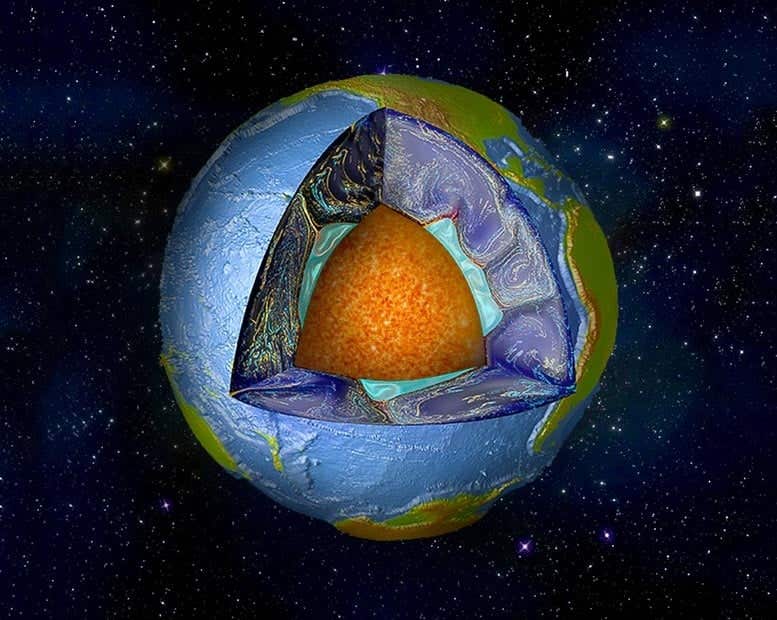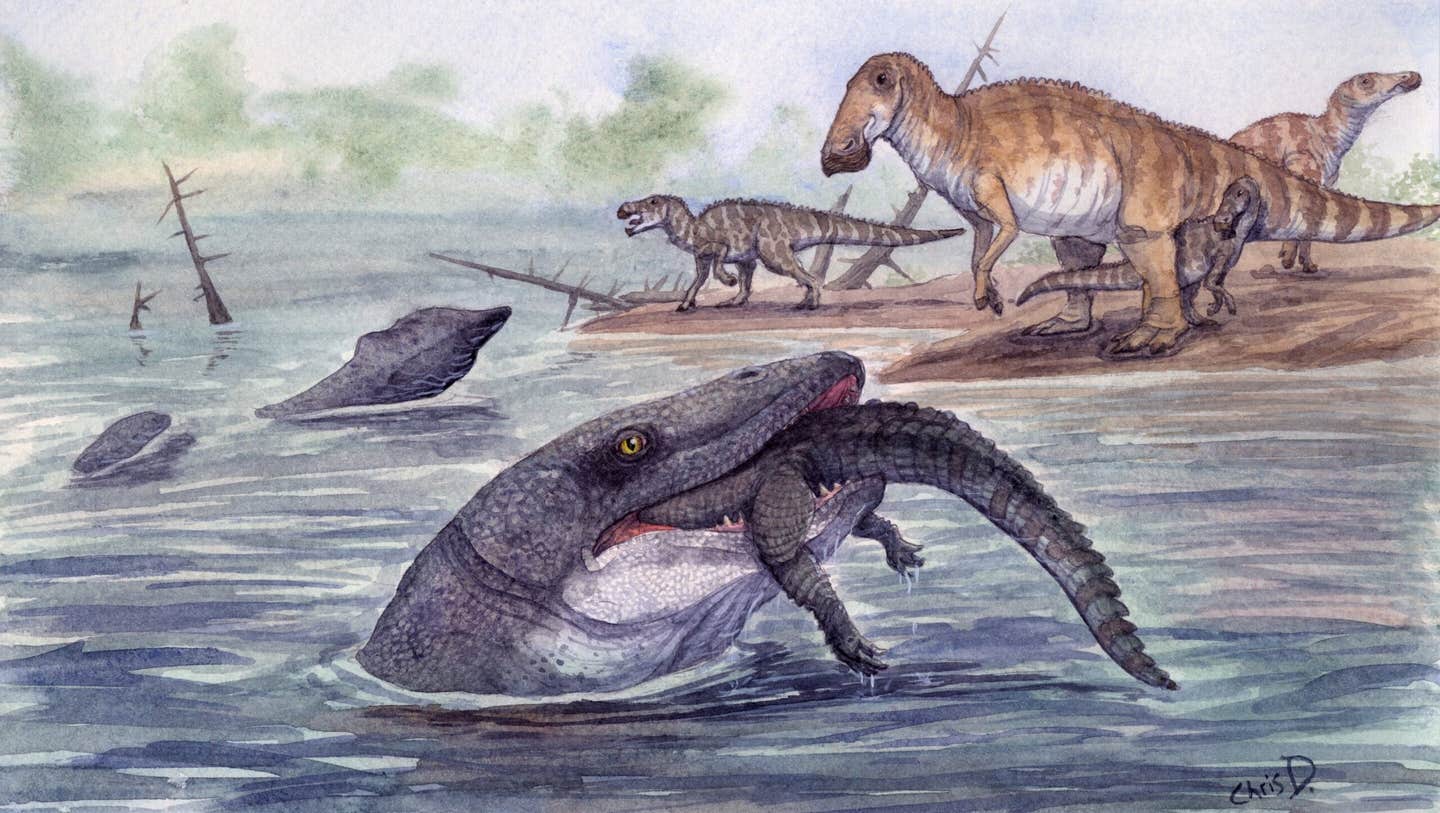Ancient tectonic shifts cooled Earth and paved the way for complex life
The “Boring Billion” wasn’t boring after all. Deep tectonic shifts cooled the planet, expanded shallow seas, and set the stage for life as we know it.

 Edited By: Joshua Shavit
Edited By: Joshua Shavit

Scientists reveal how Earth’s mantle reshaped continents and created conditions that sparked complex life. (CREDIT: Mingming Li/ASU)
For decades, geologists labeled a billion-year stretch of Earth’s history—from 1.8 to 0.8 billion years ago—as the “Boring Billion.” They assumed not much occurred during the time: mountain building slowed down, oxygen levels were low, and evolution slowed down.
But a new study has flipped that understanding, and what they discovered was a planet gradually transforming beneath its peaceful façade. Far from boring, this period saw the reorganization of deep Earth in manners that prepared the way for life to grow complex.
The Supercontinent That Changed Everything
An international group led by scientists from the University of Adelaide and the University of Sydney reconstructed close to two billion years of tectonic activity, connecting plate movement with carbon cycling variability between the Earth's mantle, crust, oceans, and atmosphere. Their model shows that breakup of the ancient supercontinent Nuna around 1.46 billion years ago triggered a planetary reset.
When Nuna ruptured, the edges of continents—passive edges—expanded in an astonishing way, doubling to some 130,000 kilometers in length. These wide, flat continental shelves were the most coveted real estate for ocean microbes that predominated sunlit oceans. Today's Earth, for comparison, has about 170,000 kilometers of comparable coastlines.
Subduction zones, where tectonic plates slide beneath another and volcanoes erupt, contracted in the meantime. With fewer volcanoes spewing carbon dioxide and other gases, the atmosphere cooled and greenhouse gases declined. Scientists estimate volcanic carbon emissions dropped from perhaps 30 million tons a year to approximately 10 million tons as of 1.27 billion years ago.
When Less Volcanism Meant More Oxygen
This shift in Earth's tectonic tempo had profound implications above ground. With less volcanic carbon dioxide heating the air, the planet likely cooled to a more moderate climate. Meanwhile, construction of continental shelves created gigantic, shallow seas—rich habitats for oxygen-producing photosynthetic microbes.
The timing is also with the fossil record of the evolution of complicated single-celled eukaryotes—organisms with nuclei that would later split off to become fungi, animals, and plants—radiating around 1.05 billion years ago.
"It's a demonstration of the impact of plate tectonics on Earth's habitability," said Professor Dietmar Müller from the University of Sydney's EarthByte Group. "It's an alternative method of thinking about how tectonics, climate, and life co-evolved over long timescales."
The Deep Carbon Conveyor
To observe the way these invisible forces worked, the team replicated the "deep carbon cycle"—the gradual flow of carbon between the interior and surface of the Earth. New ocean crust created at mid-ocean ridges absorbs carbon dioxide from seawater. As the crust ages, it traps more and more carbon before ultimately returning to the mantle at subduction zones. There, some is released in volcanoes, but most is trapped away for eons.
After the breakup of Nuna, slower spreading rates and steeper ridge flanks trapped more carbon in oceanic crust, and slowing subduction activity released fewer carbon emissions through volcanism. This transition turned Earth into a carbon-saving machine that lowered atmospheric carbon dioxide and set the stage for a cooler oxygen-rich world.
University of Sydney co-author Associate Professor Adriana Dutkiewicz summarized, "This double action—reduced volcanic carbon emission and enhanced geological carbon burial—cooled Earth's climate and altered ocean chemistry, preparing conditions for the emergence of more advanced life."
From Nuna to Rodinia
As Nuna disintegrated, Earth's tectonic plates separated and re-metamorphosed together over time to form the next supercontinent, Rodinia, around 900 million years ago. During this 600-million-year dance of tectonics, Earth's crust grew and contracted, and the carbon storage shifted to release equilibrium.
Plate speeds were approximately 4 to 7 centimeters per annum at this time, not very different from the present. There was a temporary burst of faster movement 1.1 billion years ago that may have been coincident with upper crust-formation highs. Each tectonic speed change affected the volume of carbon that cycled through Earth's mantle and atmosphere and fueled the precise correlation of deep-Earth processes and surface conditions.
Associate Professor Juraj Farkaš from the University of Adelaide described, "These shallow oceans and huge continental shelves were major ecological incubators. They provided stable, nutritious environments where more advanced life forms could evolve and diversify."
A Planet in Quiet Transformation
Volcanic eruptions are huge emitters of gases like carbon dioxide, methane, and sulfur—heat-trapping chemicals or oxygen-consuming chemicals. The decrease in volcanic output, the Earth's mid-Proterozoic tectonic shift may have tipped the balance in the direction of more oxidizing conditions favorable to photosynthesis and oxygen accumulation.
Although volcanism wasn't the only game in town—biology, weathering, and nutrient cycling all had a hand—its gradual withdrawal over the millennia likely gave photosynthetic life the room it needed to change the chemistry of the Earth. Those bacteria, thriving nicely in peaceful, oxygen-filled oceans, paved the way for multicellularity to emerge hundreds of millions of years later.
A New Way to See Earth's "Boring Billion"
The researchers note that tectonics did not single-handedly trigger the development of oxygen and eukaryotes. But it created the physical and chemical environment under which such a shift became possible. Between 1.75 and 1.0 billion years ago, Earth's volcanic carbon emission reduced by approximately two-thirds while its continental shelves doubled. Together, these developments cooled the globe, stabilized oceans, and expanded the range of environments in which life became viable.
Instead of static sleep, so-called "Boring Billion" is today unveiled as a period of quiet revolution—a billion years in which the deep Earth laid the groundwork for the oxygen-rich, life-filled world that was to follow.
It's a story of how deep processes on Earth, specifically the rifting away of the ancient supercontinent Nuna, set in motion a series of events that remodeled our world's atmosphere and oceans," Müller said. "Tectonics and life have always been intertwined."
Practical Implications of the Research
This research remakes scientists' thinking about the long-term habitability of Earth. By linking tectonics to climate stability and oxygenation, it illustrates that the sluggish cadences of the deep interior can affect the surface conditions that support life.
The finding could help scientists understand how other planets could achieve the right ratio of tectonics and atmosphere to sustain life.
On Earth, the studies illustrate how minor changes in geology will affect biology on a worldwide scale, and offer insights into the delicate balance that creates our world suitable for inhabitation.
Research findings are available online in the journal Earth and Planetary Science Letters.
Related Stories
- Scientists discover how extreme heat forged the world’s continents
- New study redraws the world map: Earth only has six continents
- Zealandia: Scientists discovered Earth’s missing 8th continent
Like these kind of feel good stories? Get The Brighter Side of News' newsletter.
Joseph Shavit
Science News Writer, Editor-At-Large and Publisher
Joseph Shavit, based in Los Angeles, is a seasoned science journalist, editor and co-founder of The Brighter Side of News, where he transforms complex discoveries into clear, engaging stories for general readers. With experience at major media groups like Times Mirror and Tribune, he writes with both authority and curiosity. His work spans astronomy, physics, quantum mechanics, climate change, artificial intelligence, health, and medicine. Known for linking breakthroughs to real-world markets, he highlights how research transitions into products and industries that shape daily life.



